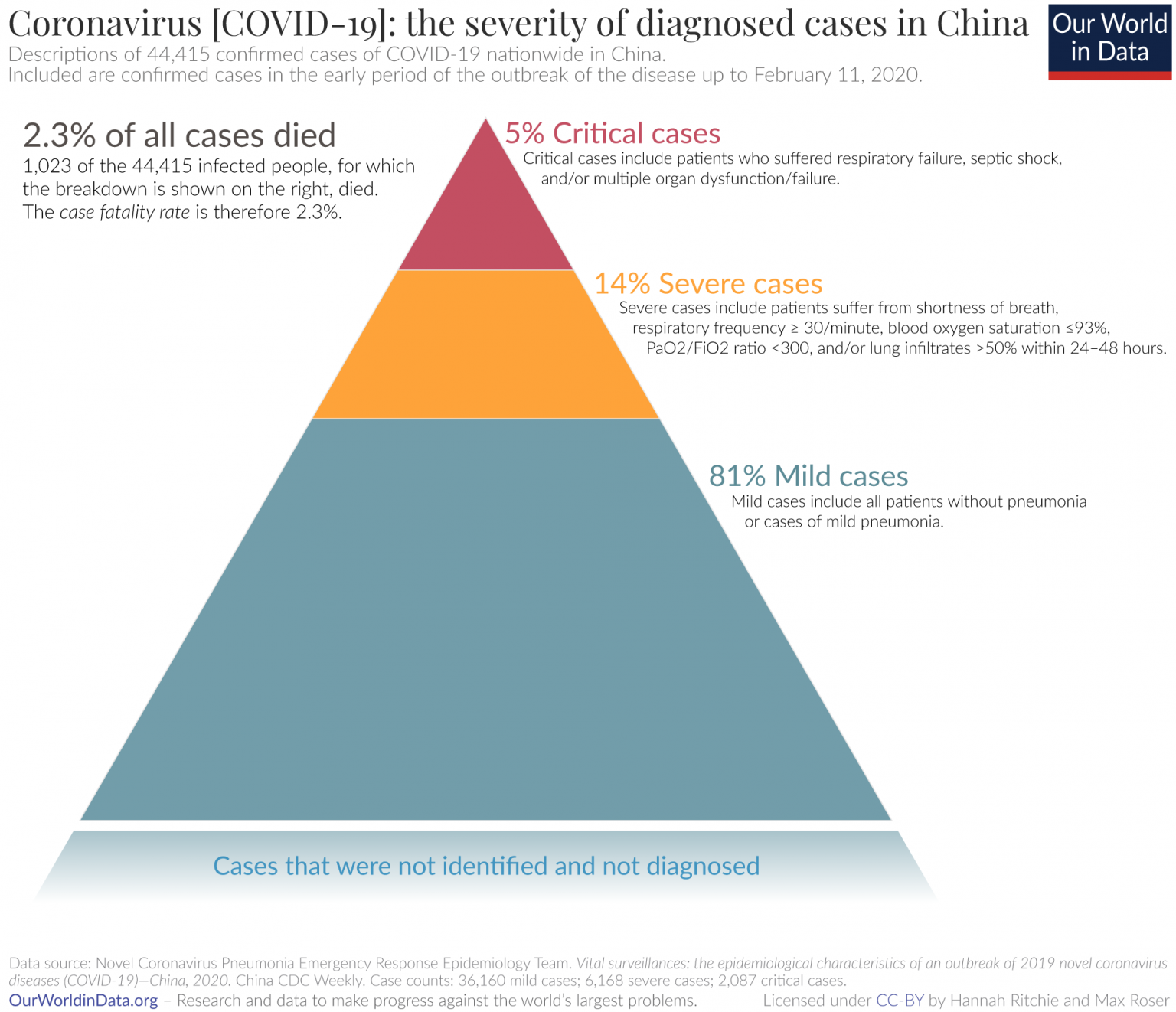What percentage of infections never develop symptoms?
Epistemic Status: Pretty confident in my uncertainty, expect more data to become available that eventually resolves the question
Tl;dr: Anything from zero to half of coronavirus infections are asymptomatic, but we currently can’t narrow it down much more than that.
One way to estimate the number of asymptomatic cases is to PCR test a bunch of people and see what percentage test negative. There’s three obvious problems with that:
- Unrepresentative samples- if you did this in the US the asymptomatic rate would be severely depressed because symptomatics are prioritized in testing.
- Some of those people might go on to develop symptoms later.
- The test could be wrong.
The most representative sample I know of is the Diamond Princess cruise liner, because everyone on board was tested, giving us some kind of reasonable denominator. It’s still not a random sample of the population, because cruise takers skew old-but-healthy-for-their-age, but it’s a start. Of that population, 3,063 tests returned 634 positive results, of which 306 were asymptomatic. But this only solves problem 1, a bit.
This pre-print uses statistical modeling to try to sort those into presymptomatic and true-asymptomatic cases, but has a weird math error I’m trying to get clarity on. I e-mailed the English-speaking author on 3/24 and will update if I hear back, but until then, here’s the problem: the model uses an incubation period of 6.4 to predict that 18% of C19 infections are true-asymptomatic (as opposed to merely pre-symptomatic). But when they let that vary from 5.5 to 9.5 days, they get a range of 20% to to 40%. That only works if percent-asymptomatic is a non-monotonic function of incubation period, and that would be extremely weird..
Even if that model is correct there’s still the problem of unreliable tests. This paper estimates that “almost half or more” of asymptomatic positives among people, tested in China, because they were in close contact with a known case, were false positives and the person never had the virus. Unfortunately the English abstract doesn’t specify how they came to this number, and the original article is in Chinese, so I can’t even attempt to translate this to other populations.
[EDIT 3/28: This paper has been retracted]
This news article based on “classified Chinese government data” says that ⅓ of people who tested positive asymptomatic, but doesn’t specify whether they were monitored to see if they stayed asymptomatic.
My best hope for better data on this is South Korea, thanks to its aggressive testing and monitoring strategy. Unfortunately I haven’t found any of their results, despite spending 30 minutes looking.


What percentage of infections never develop symptoms?
Epistemic Status: Pretty confident in my uncertainty, expect more data to become available that eventually resolves the question
Tl;dr: Anything from zero to half of coronavirus infections are asymptomatic, but we currently can’t narrow it down much more than that.
One way to estimate the number of asymptomatic cases is to PCR test a bunch of people and see what percentage test negative. There’s three obvious problems with that:
The most representative sample I know of is the Diamond Princess cruise liner, because everyone on board was tested, giving us some kind of reasonable denominator. It’s still not a random sample of the population, because cruise takers skew old-but-healthy-for-their-age, but it’s a start. Of that population, 3,063 tests returned 634 positive results, of which 306 were asymptomatic. But this only solves problem 1, a bit.
This pre-print uses statistical modeling to try to sort those into presymptomatic and true-asymptomatic cases, but has a weird math error I’m trying to get clarity on. I e-mailed the English-speaking author on 3/24 and will update if I hear back, but until then, here’s the problem: the model uses an incubation period of 6.4 to predict that 18% of C19 infections are true-asymptomatic (as opposed to merely pre-symptomatic). But when they let that vary from 5.5 to 9.5 days, they get a range of 20% to to 40%. That only works if percent-asymptomatic is a non-monotonic function of incubation period, and that would be extremely weird..
Even if that model is correct there’s still the problem of unreliable tests. This paper estimates that “almost half or more” of asymptomatic positives among people, tested in China, because they were in close contact with a known case, were false positives and the person never had the virus. Unfortunately the English abstract doesn’t specify how they came to this number, and the original article is in Chinese, so I can’t even attempt to translate this to other populations.
[EDIT 3/28: This paper has been retracted]
This news article based on “classified Chinese government data” says that ⅓ of people who tested positive asymptomatic, but doesn’t specify whether they were monitored to see if they stayed asymptomatic.
My best hope for better data on this is South Korea, thanks to its aggressive testing and monitoring strategy. Unfortunately I haven’t found any of their results, despite spending 30 minutes looking.
See image here for a best-estimate of the course of infection. (Matches a number of other analyses, unfortunately doesn't have good representation of uncertainty.)